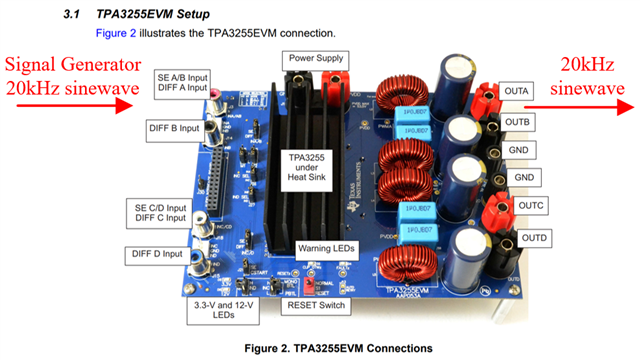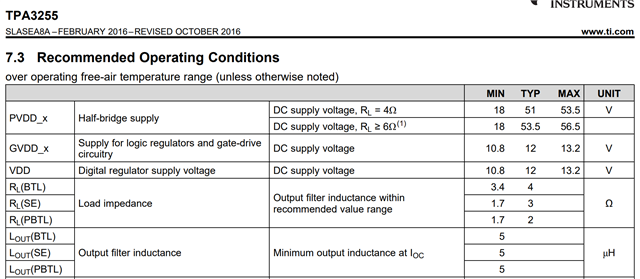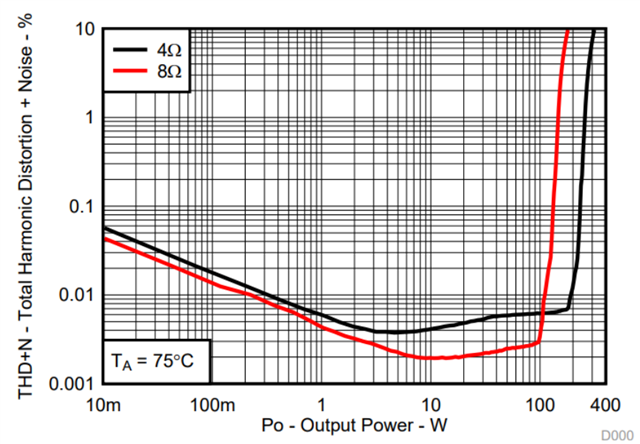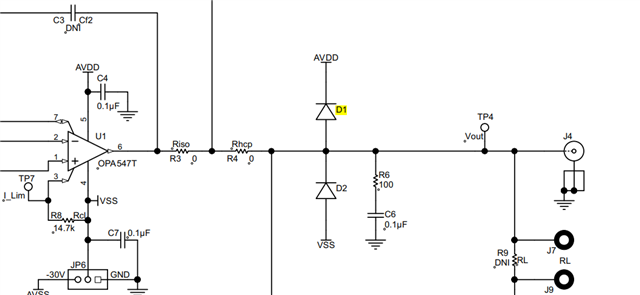Other Parts Discussed in Thread: TPA3255
Hi, guys
Sorry to bother, I have searched some of the posts about using speaker amplifier beyond audio application, but I can't find solutions to mine.
My application is to drive inductive coil load (multiple turns of wire).
Input signal of PA: 20kHz sinewave, voltage signal
Wanted output signal to drive the load: 20kHz sinewave, 0~2A (adjustable step, e.g. 0.1A increment)
Load: Classical series resonanance: L of the coil =300uH, series C = 8.3uF, DC resistance of coil is 0.5 ohm. The load is resonant at 20kHz, so the L and C are cancelled out. Only remain DC resistance of coil.

My question is:
Q1: Since I not familiar with audio amplifier design, so I want to buy the evaluation board directly. Can I just connect the signal generator and feed the 20kHz sinewave to this evaluation board?

Q2: And to match the recommened load 2 ohm~4ohm load required by TPA 3255 (screen shot below), I connect a roughly 3.5 ohm power resistor. Is it OK?

Q3: Since I also want to change the current in the coil in steps, does TPA3255EVM support adjusting the current by adjusting the output power? (e.g evaluation board output 8W corresponds to 1A, 9.68W corresponds to 1.1A. 18W corresponds to 1.5A, 32W corresponds to 2A). Or any methond that I can adjust the current?
Q4: I have seen in other posts that we need to choose LC filter, but because my load itself is a inductive, so do we need LC filter again? Beacause I think LC filter will change the resonant frequency.
Q5: If this evaluation board is suitable for my application. Any other things I need to notice?
Q6: Another question is can speaker amplifier directly drive the inductive coil? Will it cause unstable or something? I know for capacative load we need to do compensation network, but for inductive load? It seems that 300uH at 20kHz, its impedance is Z=2×pi×20kHz×300uH = 37.7 ohm, so is flowing 0~2A OK?

Best Regards
Grant Ward




